Exhibit
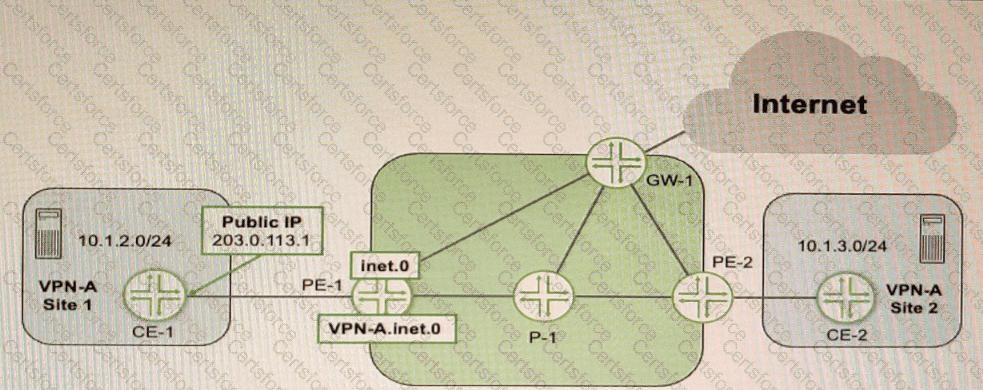
Referring to the exhibit, CE-1 is providing NAT services for the hosts at Site 1 and you must provide Internet access for those hosts
Which two statements are correct in this scenario? (Choose two.)
Exhibit
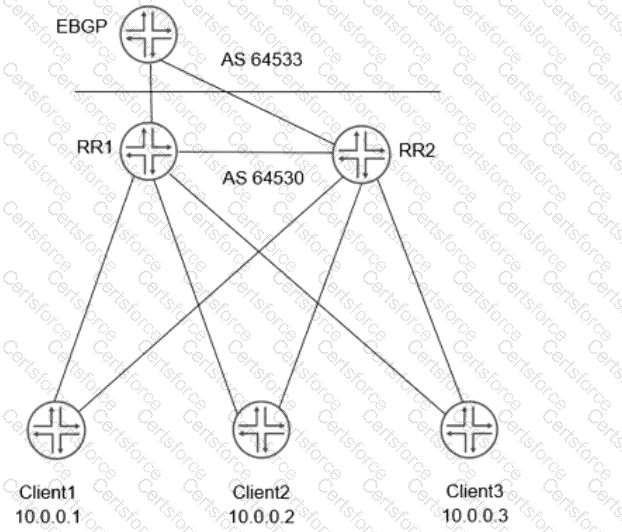
Referring to the exhibit, which two statements are correct about the dual route reflectors within a cluster? (Choose two.)
Exhibit

You want Site 1 to access three VLANs that are located in Site 2 and Site 3 The customer-facing interface on the PE-1 router is configured for Ethernet-VLAN encapsulation.
What is the minimum number of L2VPN routing instances to be configured to accomplish this task?
Which three mechanisms are used by Junos platforms to evaluate incoming traffic for CoS purposes? (Choose three )
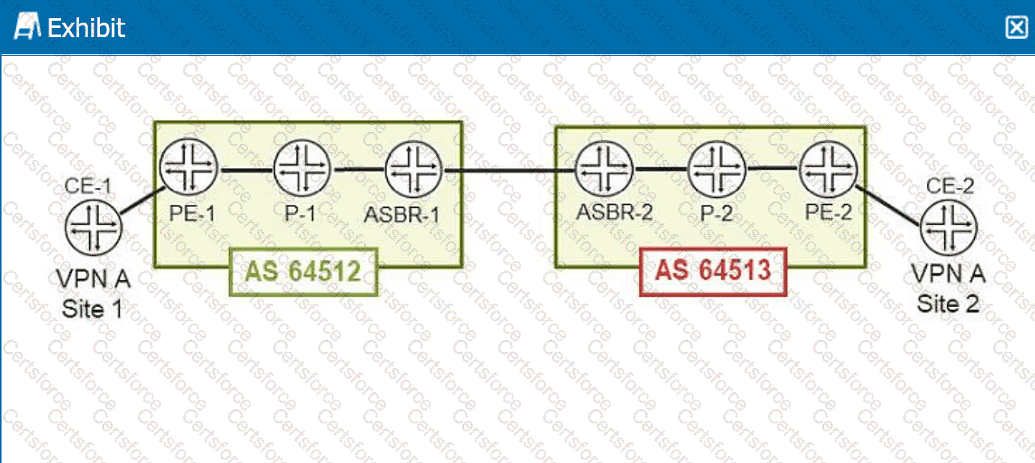
Click the Exhibit hutton.
You are configuring an interprovider Option C Layer 3 VPN to connect two customer sites.
Referring to the exhibit, which three statements are correct? (Choose three.)
You are configuring a BGP signaled Layer 2 VPN across your MPLS enabled core network. In this scenario, which statement is correct?
Exhibit
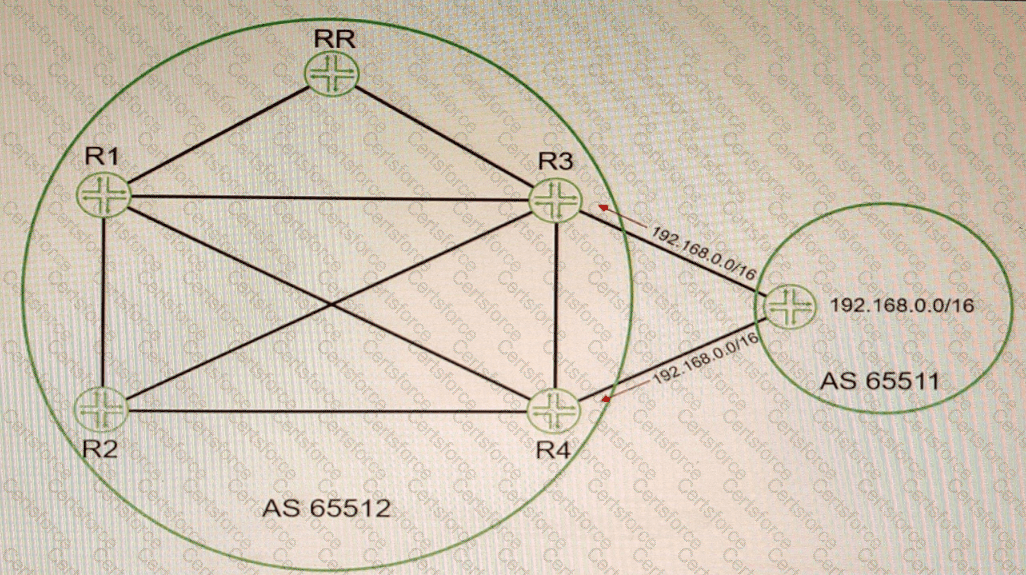
Referring to the exhibit, you are receiving the 192.168 0 0/16 route on both R3 and R4 from your EBGP neighbor You must ensure that R1 and R2 receive both BGP routes from the route reflector
In this scenario, which BGP feature should you configure to accomplish this behavior?
Exhibit
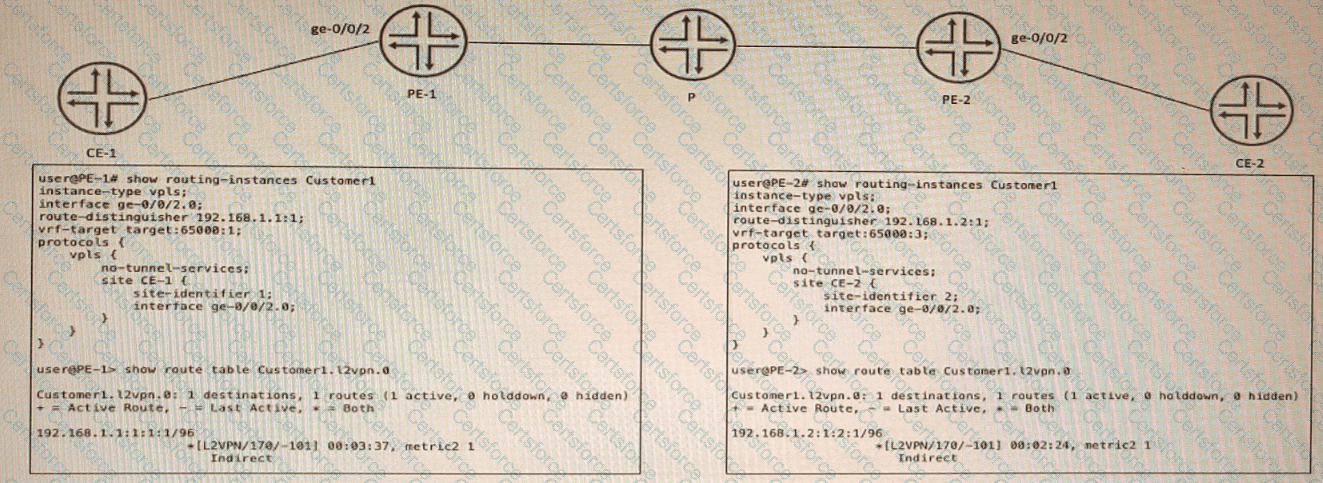
CE-1 and CE-2 are part of a VPLS called Customer1 No connectivity exists between CE-1 and CE-2. In the process of troubleshooting, you notice PE-1 is not learning any routes for this VPLS from PE-2, and PE-2 is not learning any routes for this VPLS from PE-1.
When using OSPFv3 for an IPv4 environment, which statement is correct?
A packet is received on an interface configured with transmission scheduling. One of the configured queues In this scenario, which two actions will be taken by default on a Junos device? (Choose two.)